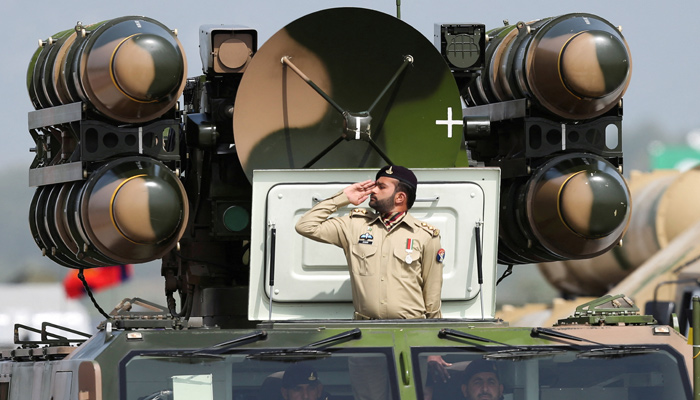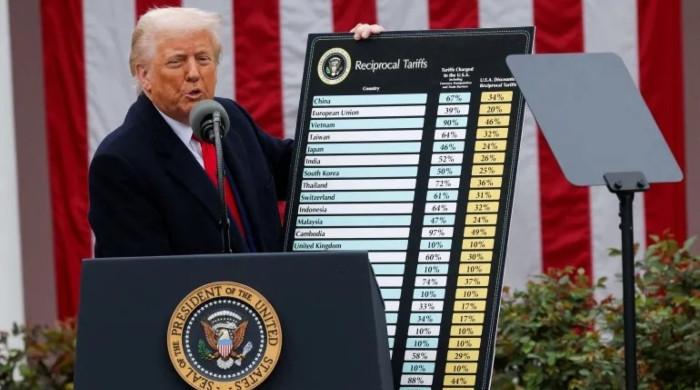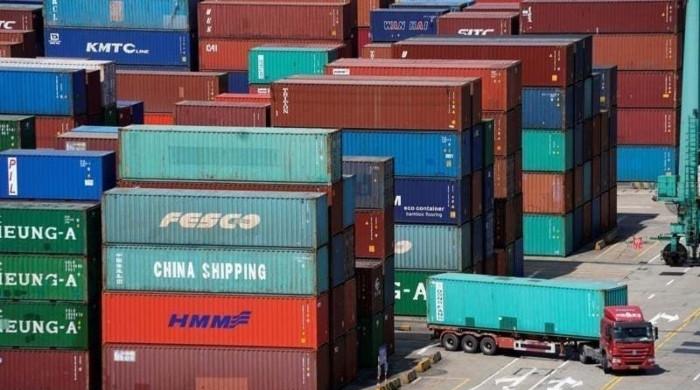The paradox of US policy
In past, Pakistan has always considered the US to be a mediator and a stabilising factor in its relations with India
February 17, 2025

In the last phase of the Biden Administration, the then US deputy NSA Jon Finer made shocking remarks that Pakistan’s missiles will have the capability to strike targets well beyond South Asia including the US.
This was an unprecedented statement by any US official, which came as a surprise not only for Pakistan, but also for policy and missile experts around the globe. Finer, however, was unable to establish any motive for Pakistan to develop this capability.
Pakistan responded that its strategic programme and allied capabilities were solely meant to deter and thwart a clear and visible existential threat from India and should not be perceived as a threat to any other country. The most plausible reason behind this outburst appeared to be an effort to lock the new US administration in a negative bind with Pakistan.
In June 2022 and 2023, the US released Country Integrated Strategies for India and Pakistan, where the US “encourages increased transparency and (unilateral) restraint on Pakistan’s nuclear and missile programs so that these do not pose a threat to the US or its allies and partners.” At the same time, the US aims to have “expanded defense and security cooperation with India to enhance interoperability and help India to provide security to the (so-called) Indo-Pacific region and beyond.”
Contrarily, the same strategy calls for dialogue and regional integration in South Asia. This US approach comes at the cost of undermining regional stability in South Asia. How can Pakistan exercise unilateral restraint when India is fast developing its offensive military/ strategic capabilities including ballistic and cruise missiles, BMD systems and ASAT capabilities?
In the past, Pakistan has always considered the US to be a mediator and a stabilising factor in its relations with India. The current US strategy of developing strategic alliance with India while restraining Pakistan’s nuclear and missile programme has seriously dented its credibility as an honest broker.
In its geopolitical pursuits, the US is also compromising its leadership in the global nonproliferation regime, established international law and rule-based order. Since the US has been cozying up to India after the end of cold war, policymakers in Pakistan see a pattern in American policies that ignore nonproliferation priorities over geopolitical interests.
In 2008, the US arm-twisted the Nuclear Suppliers Group (NSG) to grant a waiver to India to facilitate its peaceful nuclear cooperation without ensuring clean separation of civilian and military programmes. This waiver has freed-up India’s unsafeguarded civilian nuclear fissile material for its military programme.
In 2020, the US reinterpreted its domestic MTCR policy, giving it national discretion to export Unmanned Aerial Systems (UAS) with a maximum speed of 800 kms/hr allowing the US to export MQ-9B Reaper drones to its allies, including India. The latest deviation from the MTCR guidelines provide increased flexibility to the US to export certain missiles, UAS and SLV systems to advance shared defence objectives with its close allies. The biggest beneficiary of deviation in US nonproliferation policies is India.
Historically, India has adapted its SLV programme, leveraged by the international cooperation into its Agni series ballistic missiles programme. Ironically, the former US deputy NSA during his speech at Carnegie also indicated that the US was in the process of amending its national memorandum on MTCR guidelines meant to facilitate greater space cooperation with US allies like India.
India’s space technology has directly influenced its Intercontinental Ballistic Missile (ICBM) programme. With the help of Russian technology, India developed space launch vehicles such as the GSLV, PSLV, and SLV technologies that have since been adapted for military use. Today, India possesses a large missile arsenal, capable of delivering conventional and nuclear warheads.
Among these, the Agni-V has a range of 8,000 kilometers, while the Agni-VI extends to 10,000–12,000 kilometers. In an alarming development, India has recently deployed Agni-V missiles. Meanwhile, India’s Surya missile programme remains shrouded in secrecy. India, under American pressure, has chosen not to disclose the full extent of its Surya ICBM project to avoid alarming global powers like the US, UK and France.
Officially, India maintains that its missile programme is designed as a deterrent against regional threats like China and Pakistan. However, its increasing range means that cities like London, Paris, and even New York could eventually fall within striking distance.
Despite this proliferation record and inter-exchangeability of space and missile programmes, it has been able to deepen its international cooperation in space with major space faring nations including the US. India’s testing of hypersonic missiles, canesteraisation of missiles, increasing their ready-to-launch status, increasing precision/ accuracies of new missile systems and giving it counter-force role, testing to ASAT missile and BMD undermine regional and global strategic stability.
There is a visible paradox in the American position, where it does not seem concerned about India’s ‘already matured’ missile capabilities with ranges well beyond China, which can target US bases in Indian and Pacific Oceans and also its allies. Whereas Pakistan neither has the intent nor the capability to harm US interests but is still being targeted by the US on the ‘perceived assumption’ that it will have ICBM capability after a decade.
Pakistan has consistently stated that its deterrent capability is solely aimed at maintaining deterrence against aggression from India. Islamabad maintains that the raison detre of its strategic capabilities has always been India and will continue to remain so. However, the country continues to develop restrained capabilities to maintain the credibility of deterrence with India’s ambitious military and strategic developmental programme.
Rather than being carried away with Biden’s approach, there is an opportunity for Trump to nurture peace and stability in South Asia. This can only come from balanced US policies towards India and Pakistan. Islamabad is expected to welcome any peace overture that can bring stability in the region.
Disclaimer: The viewpoints expressed in this piece are the writer's own and don't necessarily reflect Geo.tv's editorial policy.
The writer is the executive director of the Center for International Strategic Studies. He can be reached at: [email protected]
Originally published in The News











